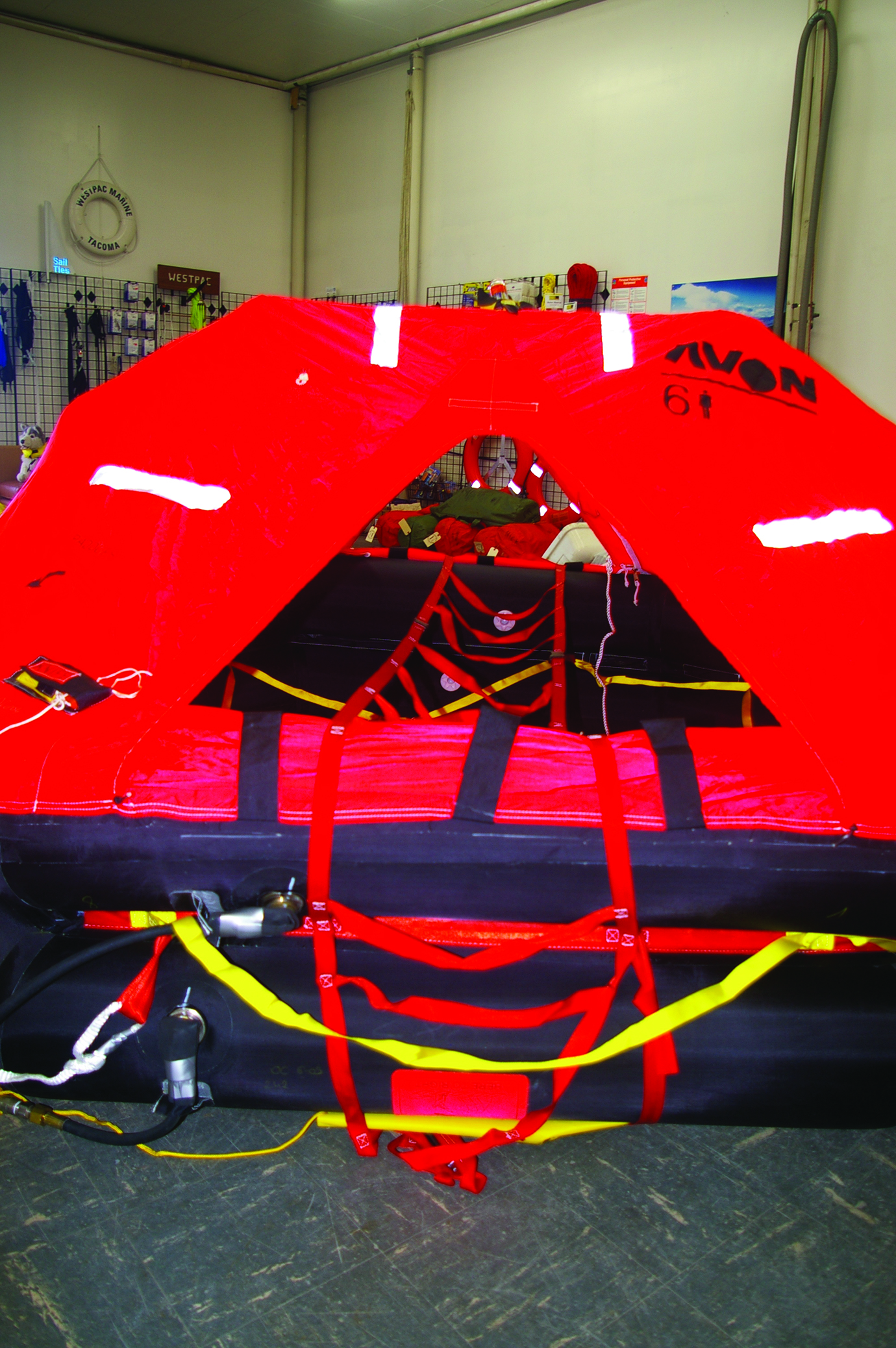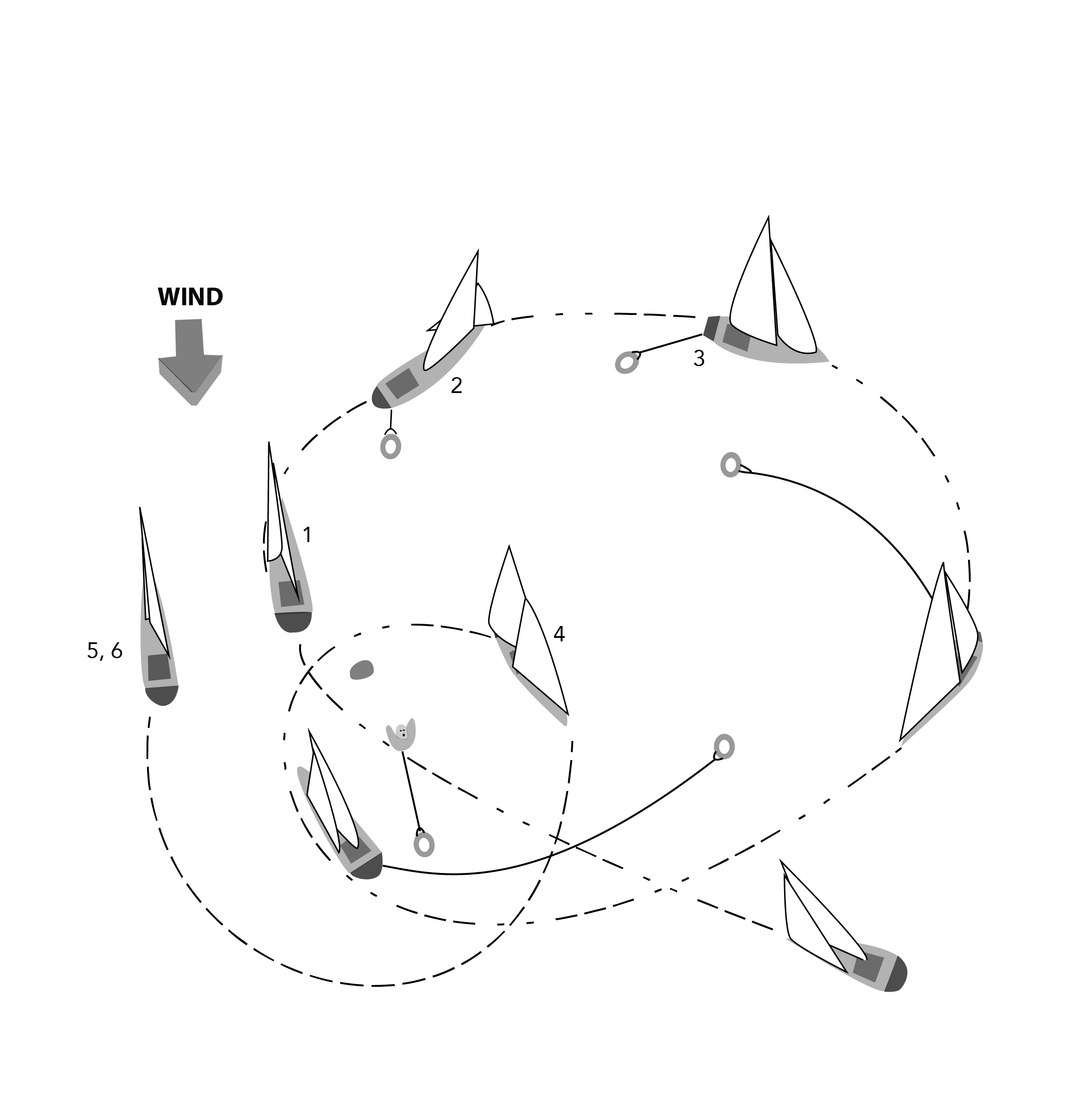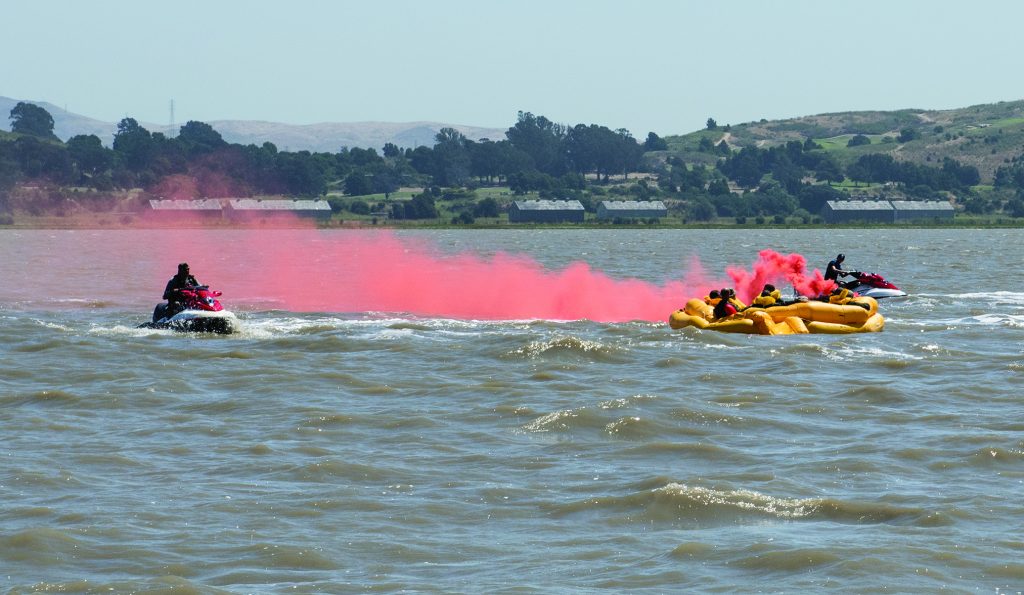It’s a cry that is so alarming that it’s against the law to falsely scream that word in a movie theater. It’s no less alarming at sea. But the time to prepare for emergencies is long before the dock lines are tossed off. Safety at sea begins now! (published March 2018)
Fire, of course is only one example of a potential emergency offshore. I don’t consider it any great claim to fame that I’ve faced most of them already: heavy weather, rigs over the side, structural failures, men overboard, failed steering systems, water gushing in through the bottom of the boat. The few problems I haven’t faced, I don’t want to face. But the fact remains that as long as I continue to click off more sea miles, the possibility still exists that I might have to confront a few more situations. Whether we’re diehard racers or cruisers, whether we day sail or prefer ocean crossings, safety and a knowledge of how to handle emergencies is important for all of us to know and understand. In fact, it may be more crucial for those of us who cruise with a limited number of crew. In an emergency, there will be fewer people to help remedy the situation. It could be more critical for us to know how best to deploy the right solution for a given emergency.
A few years of experience and dealing with more than a few problems has certainly helped me to realize that I prefer problem avoidance to problem solving. Even the best preparations, however, do not eliminate the possibility of emergencies. People get sick, weather forecasts go bust, leaks occur, wiring short circuits and problems arise. It happens. Fortunately for all of us there are people in this country and around the world who are dedicated to helping sailors better understand safety at sea and how to be prepared for most of the common emergencies one might run into “out there”. Now, during the Northern Hemisphere winter and spring, we have some of the best opportunities available to sharpen our safety at sea skills.
 Perhaps one of the best ways in which we can improve those skills is by taking a US Sailing Safety At Sea Seminar. (See: www.ussailing.org/education/safety-at-sea/) Whether you’re a racer preparing for an offshore race or a cruiser planning to take your family down the coast, attending the lectures presented by experienced, knowledgeable sailors will help you to develop emergency plans and select and better understand the appropriate equipment. US Sailing offers four types of courses, based upon the type of sailing you’re planning to do and how you would prefer to take those courses. For blue water sailors, there is the Offshore Safety at Sea course, a one day lecture-type series, and the two-day International Offshore Safety at Sea with Hands-on Training.
Perhaps one of the best ways in which we can improve those skills is by taking a US Sailing Safety At Sea Seminar. (See: www.ussailing.org/education/safety-at-sea/) Whether you’re a racer preparing for an offshore race or a cruiser planning to take your family down the coast, attending the lectures presented by experienced, knowledgeable sailors will help you to develop emergency plans and select and better understand the appropriate equipment. US Sailing offers four types of courses, based upon the type of sailing you’re planning to do and how you would prefer to take those courses. For blue water sailors, there is the Offshore Safety at Sea course, a one day lecture-type series, and the two-day International Offshore Safety at Sea with Hands-on Training.
US Sailing’s one day Offshore Safety at Sea seminar covers personal safety gear, man overboard procedures, emergency communications and search and rescue as well as heavy weather, storm sails, crew health, jury rigging, life rafts and other topics. The topics are presented by people who understand the subject matter intimately, and they are there to help spread their knowledge to other sailors.
The two day course with hands-on training includes time in a pool, as you actually inflate your lifejacket to discuss how best to use it and what are its limitations. Time is spent with each person getting into a life raft so they thoroughly understand the best procedures for getting into a raft, how various rafts work and are re-righted if necessary, and what the value of the features are that they may have on their own life rafts. Attendees actually fire off flares so they understand how to safely use those pieces of equipment if necessary, and they hear from additional experts on topics such as life slings, rigging and deployment of storm sails. To find out the location of US Sailing’s Safety at Sea Seminars, please see: www.ussailing.org/education/safety-at-sea/find-a-seminar-near-you/ If you have the mistaken impression that jumping into the water with an inflated personal flotation device, unequipped with leg / crotch straps will be fine, you should try it in a pool – with supervision. The experience will be enlightening.
Of course, not everyone can get to a suitable location, so US Sailing has made courses also available online. Those can be found at: www.boaterexam.com/sailing/safetyatsea/
Additionally, numerous experts have contributed to US Sailing’s Safety at Sea book, The 220-page book was written to help people better understand how to deal with many of the common emergencies encountered while at sea. You can find the book online at: www.landfallnavigation.com/us-sailing. The book presents real life situations by people who know what they’re talking about. Regardless of how experienced you might be, I’m sure you will find new and interesting approaches to safety in this book. I have, and the review is always helpful.
US Sailing isn’t the only organization offering insights into safety issues encountered at sea. The Storm Trysail Club is, and has been, a strong advocate and educator on how to effectively deal with problems at sea. For years they have also offered hands-on training and junior safety programs. For a modest fee to help cover costs, sailors can conveniently access videos covering a variety of topics:
Practical Man Overboard Recovery (24 mins.)
Understanding Weather (23 mins.)
Understanding Offshore Weather (24 mins.)
Flares and Pyrotechnic Devices (6 mins.)
Storm Sails (12 mins.)
Shipboard Firefighting Strategies (4 mins.)
Fighting Shipboard Fires (7 mins.)
Personal Safety Equipment (27 mins.)
Cold water survival & Life Rafts (3 min.)
Deploying a Life Raft (6 mins.)
(See: https://stormtrysailfoundation.org/21-safety/114-safety-at-sea-videos)
For sailors interested in how to steer a boat that has lost its rudder, I would suggest watching Mike Keyworth’s video available for free at: www.youtube.com/watch?v=ABSCT7y9vnI&feature=youtu.be
 Regardless of where you get your information, it is worthwhile to put yourself in front of the knowledge that will serve you and your crew well. Now is the time of year during which you can prepare yourselves for the summer ahead. Having a “pizza night” with your crew, during which you watch some of the above videos, you can add to your planning session while potentially making a critical difference in your own safety and that of your crew.
Regardless of where you get your information, it is worthwhile to put yourself in front of the knowledge that will serve you and your crew well. Now is the time of year during which you can prepare yourselves for the summer ahead. Having a “pizza night” with your crew, during which you watch some of the above videos, you can add to your planning session while potentially making a critical difference in your own safety and that of your crew.
Several years ago, George David, owner of Rambler, the 100’ record setting sailboat, privately arranged for Dan O’Connor to oversee a safety at sea pool session for his crew. Dan is the man who has overseen the pools sessions for the US Sailing Safety at Sea Seminar at the U.S. Naval Academy as well as numerous other events, and he represents the type of quality of speakers that are available at other safety at sea events. Other boat owners have privately arranged to have personalized weather seminars presented to their crews or yacht clubs. The Cruising Club of America makes materials available for groups to host their own “Suddenly Alone” program – now called “Safety for Cruising Couples”. (See: www.cruisingclub.org/safety/suddenly)
Surround yourself with knowledgeable people, and learn all you can so you can contribute solutions when the inevitable problems arise. The talent that you help to create will be there when you need talent the most.
Bill Biewenga is a navigator, delivery skipper and weather router. His websites are www.weather4sailors.com. He can be contacted at billbiewenga@cox.net















